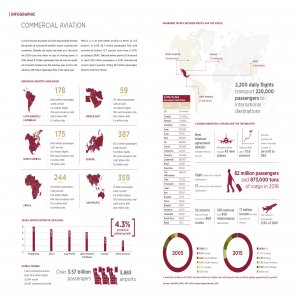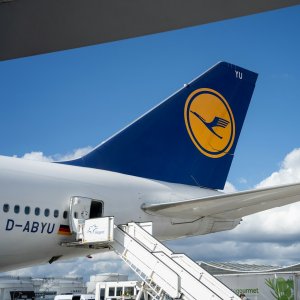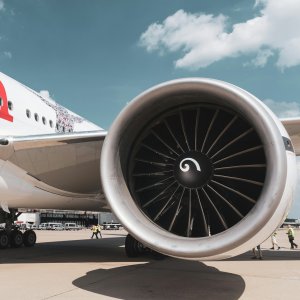Business Jets Leader Sees Big Potential in Queretaro

STORY INLINE POST
Q: What is Bombardier’s outlook for Latin America and Mexico?
A: Bombardier is divided into two large aerospace segments: commercial and business aircraft. In the business division, we have a strong growth forecast for Bombardier globally as we estimate that the global market will need 8,300 new business jets within the next 10 years. The outlook is also positive for our commercial division as we expect a need for 12,700 new aircraft by 2034. In Latin America, we forecast a need for 790 business jets and 1,150 commercial aircraft during the next 10 years.
Q: How does Bombardier’s C Series benefit the global aviation market?
A: The C Series provides significant benefits to airlines as it represents a 20 percent reduction in emissions and has the lowest fuel consumption in the 150-seat segment. It is the only aircraft originally designed for this segment, which is extremely important for Bombardier. Other manufacturers have adapted existing aircraft to address this segment, but the C Series was uniquely designed for it. The aircraft is extremely efficient and was designed with passenger’s comfort in mind. It was designed from the inside out to ensure that travelers have sufficient space. The cabin is also the quietest in its class.
In mid-2017, the CS100 landed in London City Airport, becoming the only aircraft of this size to do so. The plane’s aerodynamics reduce drag and the aircraft generates minimal noise, both important factors when flying into an airport that is located in the middle of a city. This provides the CS100 a competitive advantage for airlines that want to fly to and from airports located in the middle of large cities, such as London and Toronto.
Q: What potential does the C Series have in Latin America and how could the C Series change this market?
A: For airliners, the C Series will be a convenient aircraft as Latin America gradually increases the number of flights in the region. We have seen significant regional passenger movement within Latin America, so the C Series can easily become a tool that connects the region.
Mexico in particular is one of the world’s largest regions for aviation, together with the US and Canada. The need to be connected opens many opportunities for Bombardier’s aircraft. Mexico has been evolving as airlines renew their fleets. A few years ago, the country had 297 registered aircraft with an average age of 16 years. This number now has grown to 356 with an average of 9 years of age.
Q: What is behind Bombardier’s significant growth in Queretaro state?
A: Our employees are the main drivers behind Bombardier’s growth in Queretaro and have been among the key reasons our corporate offices are increasingly trusting in this division. Another reason for success is the blending of Bombardier’s culture with Queretaro’s, as the state prioritizes innovation. Our corporate offices are often amazed at the innovations that originate in this plant. Bombardier has an internal program called Excel Ideas, where employees propose new ways of carrying out existing processes in areas such as health and safety, quality and productivity. The plant in Queretaro is one of the largest contributors to this global program. We have strong capabilities for harnesses and a business jet unit that has been declared a center of excellence by our corporate offices.
Our facilities in Queretaro perform mostly manual assemblies so most of our innovation comes from optimizing manufacturing processes. Our main offices recognize our operations in Queretaro for the value they add while lowering costs and improving quality. In terms of innovation, we are mostly focused on training our people and we have many agreements with UNAQ to train our employees.
These facilities are an integral part of the Bombardier Aerostructures Division’s internal strategy. Our main target now is to focus on the programs we have on site, which include aerostructures, composite manufacturing, electric harnesses, sheet metal and machining. All these units were developed a little more than 10 years ago. We are now in a stabilization period. Our goal is to increase the efficiency of these units and to become increasingly independent so that we can tackle all opportunities that come our way.
Our facilities in Queretaro manufacture components for every single model of Bombardier’s aircraft, be they electrical components, composites, aerostructures or sheet metal. Every single one of Bombardier’s aircraft has a component from Queretaro.
Q: How are these facilities shaping Queretaro’s supply chain?
A: Bombardier has the largest presence in Mexico of all OEMs. We are actively working to develop the sector alongside the local cluster, FEMIA and neighboring companies. The key word for the industry is collaboration. We have been working to develop the supply chain across the entire country and now we have 10 Mexican suppliers from Chihuahua, Sonora and Mexicali. Part of our mission when we established in the state was to develop Mexican suppliers. We are closely working with FEMIA and the local cluster to develop Tier 2 and 3 suppliers, which will help our facilities in Mexico to grow.
Queretaro has given Bombardier a lot and we aim to give back. Through our initiative Causa Queretaro every quarter we develop a new community support program. We are one of the biggest employers for aerospace in Queretaro, thus we are very committed to the health and safety of its citizens. We play an important role in FEMIA and the local cluster, and we spend significant time developing the aerospace sector and the small companies in it.
Q: What initiatives is Bombardier developing to support the incorporation of SMEs into the aerospace supply chain?
A: Aerospace is a complex industry. It takes a long time to acquire certifications and volume. This can be a chicken and egg problem because companies that do not have the necessary volumes are not cost-effective, but companies that are not cost-effective cannot reach these volumes. Major companies in Queretaro, such as ITP, Bombardier and Safran, are working together to generate work packages that have the volume local SMEs can supply.
The sky is the limit, especially in Queretaro. The market opportunities are there, given the extremely large demand for aircraft. This represents a major opportunity for local companies to improve their operations and to attract more contracts to Mexico. I believe that this is a strategically important moment for Mexico’s aerospace sector and through collaboration and with quality products we can convince foreign companies to introduce more processes to Queretaro. The state is big enough to reach critical mass and small enough to learn and grow.
Q: How is Bombardier ensuring the acquisition of qualified human capital?
A: Across the entire country, the aerospace sector is facing a challenge in acquiring qualified employees. To address this, the industry is collaborating with other sectors to train qualified professionals. Mexico has a great demographical advantage in its young population and the country generates more engineers than Germany.
Bombardier is heavily committed to the professional growth of our employees. Once hired, we train people in the values and processes of our company and we work hard to retain them. Many of our employees develop their professional careers successfully within our company. UNAQ is a strategic partner in the training of our employees, many of whom have received certifications from the university in composites, aerostructures or electrical operations. We are looking for people who are committed and engaged to learn.
Q: How will a renegotiation of NAFTA affect Bombardier’s operations in Mexico?
A: We will comply with any changes in the law. The renegotiation is ongoing so it is not possible to estimate the long-term impact it will have. Alongside other business associations, we are making sure that our industry’s concerns are addressed. The aerospace market has changed in significant ways since NAFTA was signed, a time when there was almost no aerospace industry in Mexico. For that reason, the current agreement does not address aerospace that much.
























